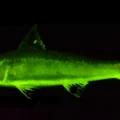Lipid droplets (LDs) are ubiquitous neutral lipid storage organelles that form at discrete subdomains in the ER bilayer. The assembly of these ER subdomains and the mechanism by which proteins are recruited to them is poorly understood. Here, we investigate the spatiotemporal distribution of Pex30 at the ER-LD membrane contact sites (MCSs). Pex30, an ER membrane–shaping protein, has a reticulon homology domain, a dysferlin (DysF) domain, and a Duf4196 domain. Deletion of SEI1, which codes for seipin, a highly conserved protein required for LD biogenesis, results in accumulation of Pex30 and phosphatidic acid (PA) at ER-LD contact sites. We show that PA recruits Pex30 at ER subdomains by binding to the DysF domain. The distribution of Pex30 as well as PA is also affected by phosphatidylcholine (PC) levels. We propose that PA regulates the spatiotemporal distribution of Pex30 at ER subdomains that plays a critical role in driving the formation of LDs in the ER membrane.











No Comments
Leave a comment Cancel